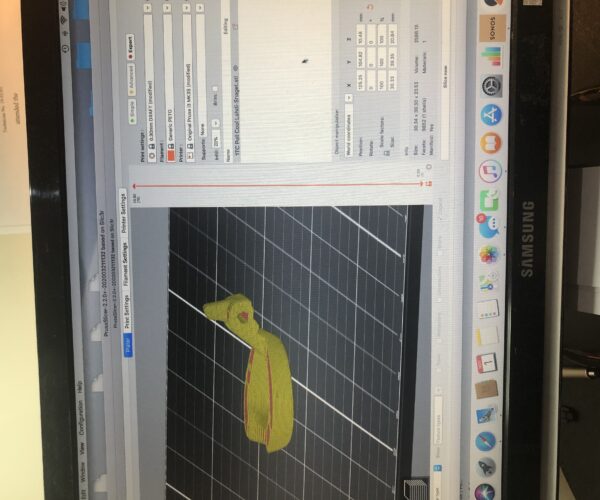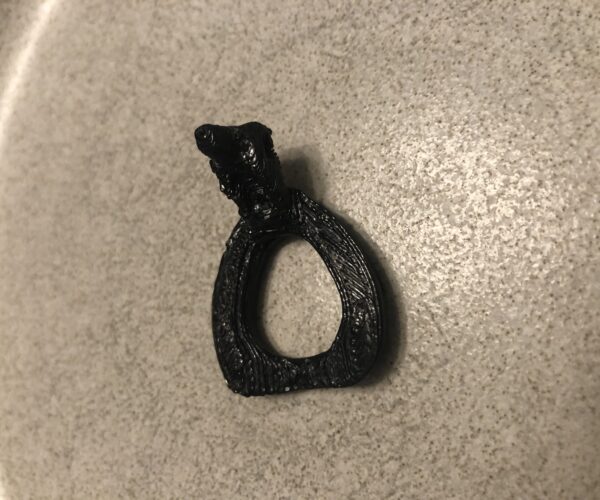Help with printing petg
My prints are coming out rough and can’t get the hole to come out , using generic petg profile , in .30mm draft , using a mk3s, heat is 230/85 240/90, heated the Petg for 3 hours at 170 f Yesterday , just repaired the stl file to OBj to see what happens .
 This is the print I’m having trouble printingany suggestion
This is the print I’m having trouble printingany suggestion
RE: Help with printing petg
Can you post some picture of the failed part?
RE: Help with printing petg
@gkmakeit
RE: Help with printing petg
Did you attempt to use supports for that overhang?
Also, if you post your .stl file I would be willing to do a test print to see what I get. Be sure you enclose it in a .zip to attach here.
RE: Help with printing petg
Are you using the fan to cool the part as your printing it? it looks to be melted in the image.
If you can provide a .3mf of the part/project file, it would really speed the helping process up, then were not just sitting here trying to guess from a couple of images.
The .3mf would be the best way to go it shows all the setting being used and contains a copy of the model exhibiting the problem, as JSW mentioned it needs to be zipped up in order to post it here.
The Filament Whisperer
RE: Help with printing petg
@jsw
Thanks: I did try it with supports, but the petg is so tough , it added more time to remove I decided to lay it flat without supports. I changed the nozzle on my mk3s and the prints are coming out 100% better
RE: Help with printing petg
@dan-p12
Thanks : I will check the fan speed , I did notice melting , I’m not familiar with .3mf but will zip a video or files, just re calibrating my xyz after putting a new nozzle on
RE: Help with printing petg
The default profiles for PETG don't use the cooling fan, but for fine, detailed parts, you might want to engage some cooling. I use 30-50% on thin vertical surfaces with PETG. This may reduce part strength.
A future version of PrusaSlicer is supposed to provide the feature to only cool external features. SuperSlicer (based on PrusaSlicer) has this feature now.
Also, for features like that opening, I'd try a lower layer height. A 0.3mm layer height is at the upper end of what a 0.4mm nozzle can handle. Ideally, you want to keep layer heights below 80% of your nozzle size even for vertical surfaces. With that slope, lower layer heights should print better. You might try auto variable layer heights.
and miscellaneous other tech projects
He is intelligent, but not experienced. His pattern indicates two dimensional thinking. -- Spock in Star Trek: The Wrath of Khan
RE: Help with printing petg
Piling on to Bob's note: printing a horizontal hole is tricky. To get the best quality hole you'd need to bring layer resolution lower to improve fitment. Too large a layer height and you begin printing unsupported bridging perimeters that will droop, dramatically reduce the ID.
RE: Help with printing petg
Note that you might have better success rotating the part to reduce the need for supports. You don't have to rotate along neat 90 degree increments. Printing at an angle may also improve vertical part strength. Id' try rotating it so that elevated bit touches the build surface.
and miscellaneous other tech projects
He is intelligent, but not experienced. His pattern indicates two dimensional thinking. -- Spock in Star Trek: The Wrath of Khan
